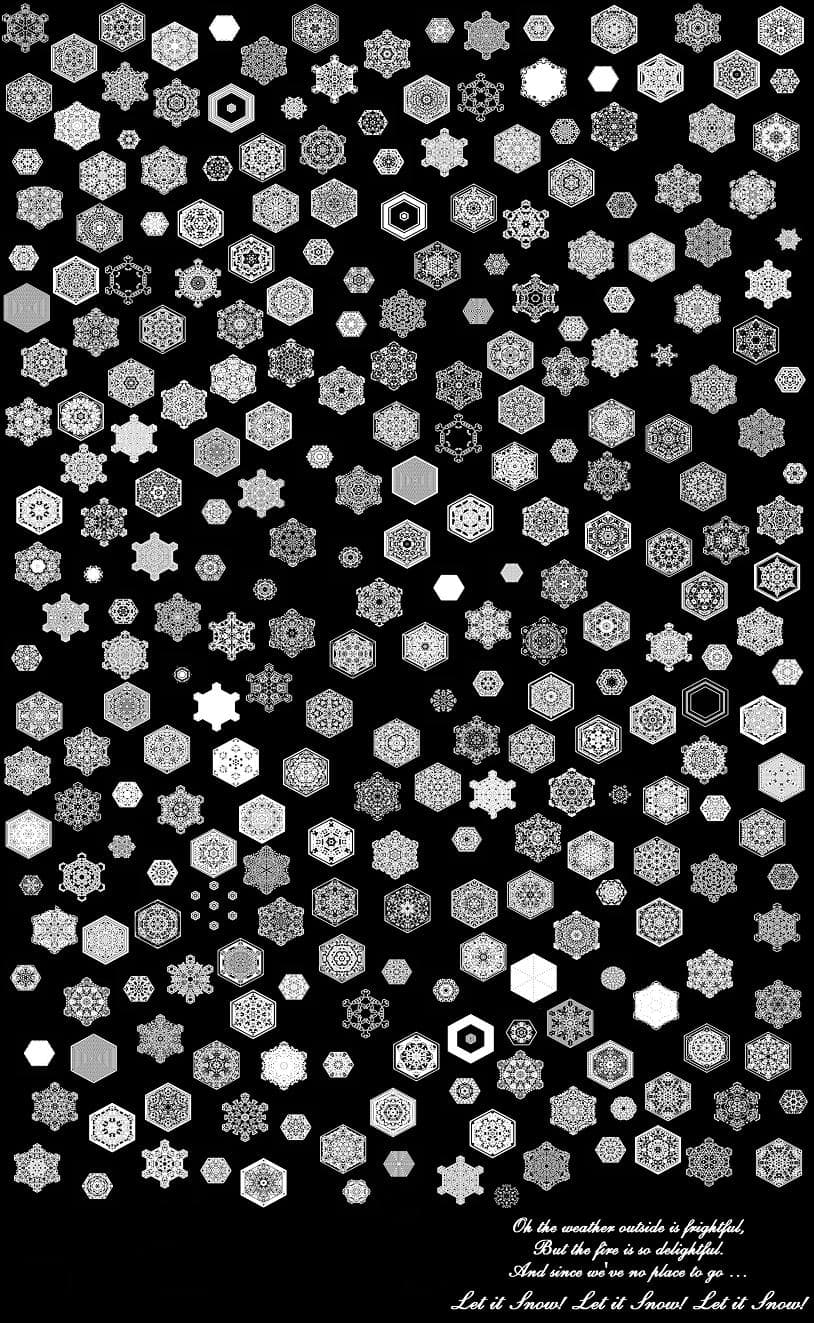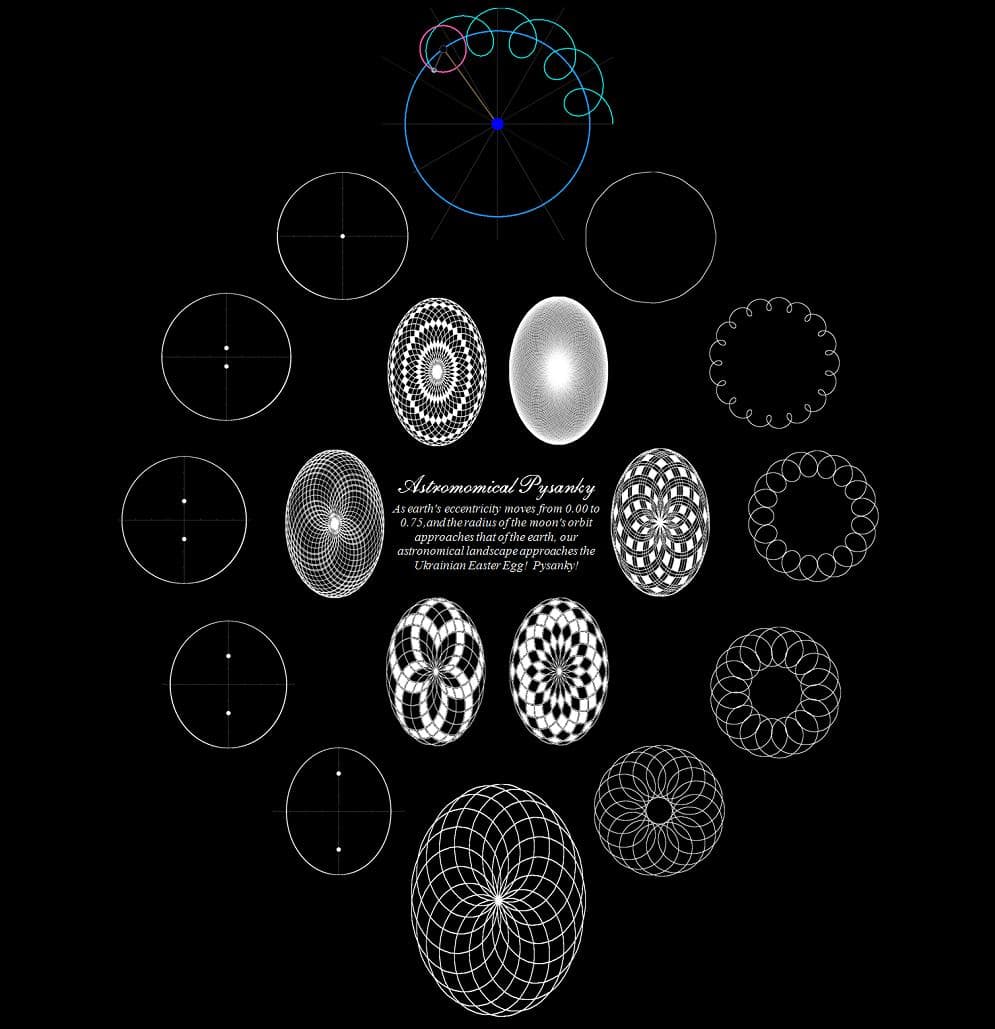2012 Joint Mathematics Meetings
Michael Round
Artists
Michael Round
Educator
Center for autoSocratic Excellence
Overland Park, Kansas, USA
Statement
I've found most mathematical works of art to be both beautiful - and hard to replicate. The viewer - particularly the student - has no software to attempt to recreate the beautiful and intriguing pieces they see. Supposing there is available software, the learning curve is either too steep, or the interface does not allow for one to "look behind the curtain" to see the "how" of the process. The work, then, stays at the "really cool" level. These two works were done in the simple spreadsheet. The math is within the realm of any high school student. How to program this, then, becomes the constraint, and it's one easily elevated. And in the process of doing this, a unique learning process unfolds, as demonstrated here with the solar system. The goal was not to simulate Ukrainian Easter Eggs. This had not even entered my mind. But in the process of creating an interface oneself, a creative process unfolds, and one enters into the land of the unexpected! Additionally, the artistic, as shown with these two pieces below, need not be in conflict with the scientific. In the pieces below, the mechanisms of the solar system and water in the atmosphere under freezing conditions were the items being investigated - and still being investigated!
Artworks

A Winter Wonderland
18 x 18
Paper
2009

Astronomical Pysanky
18" x 24"
Paper
2011